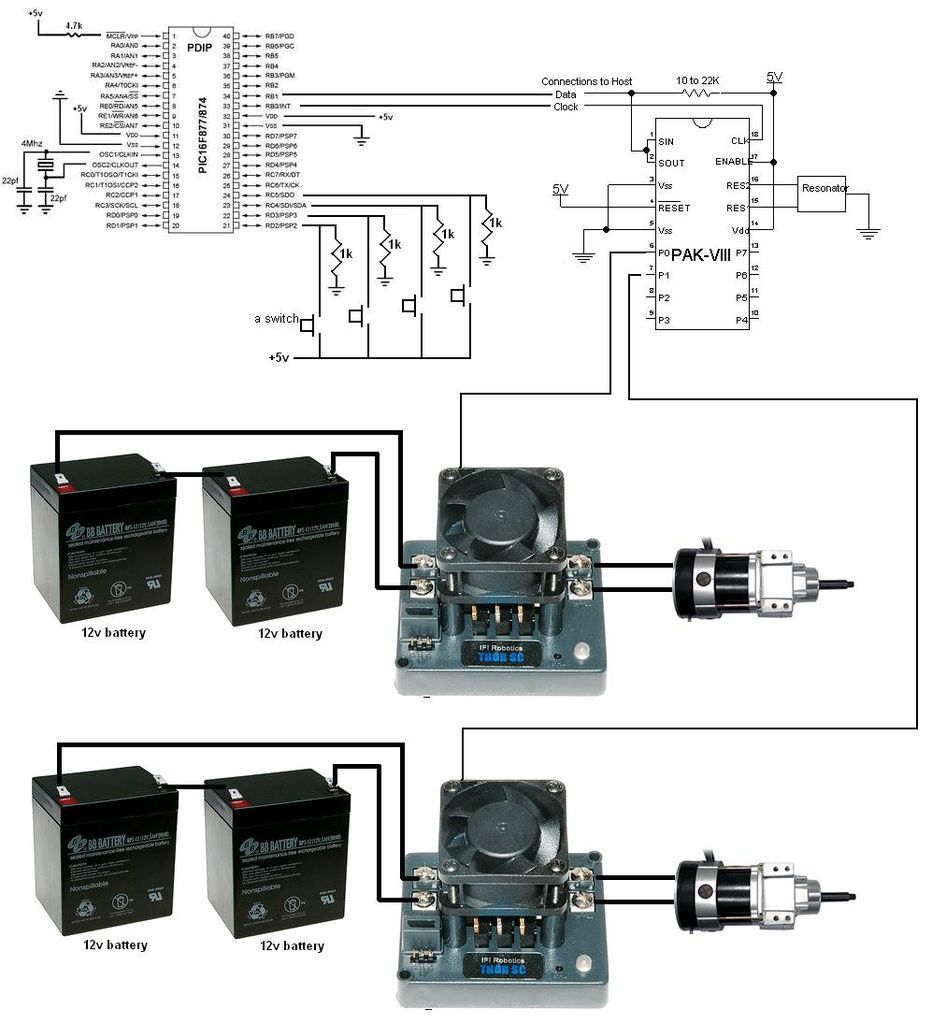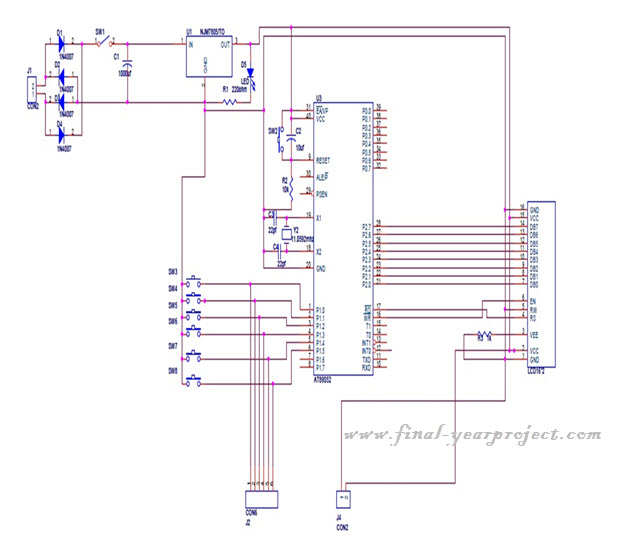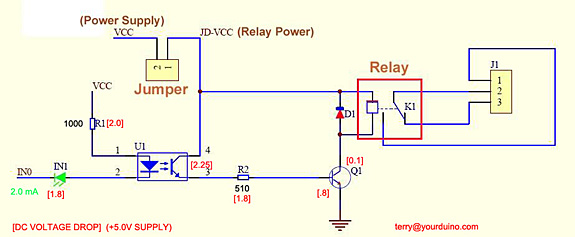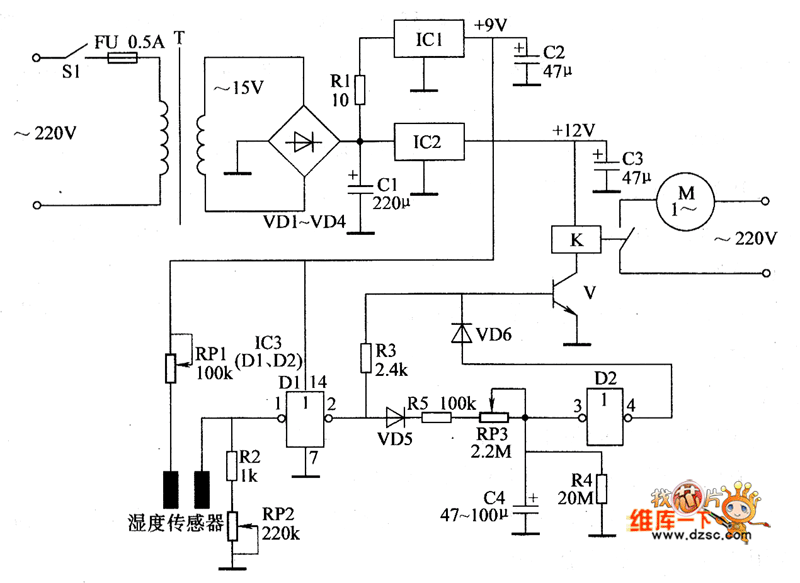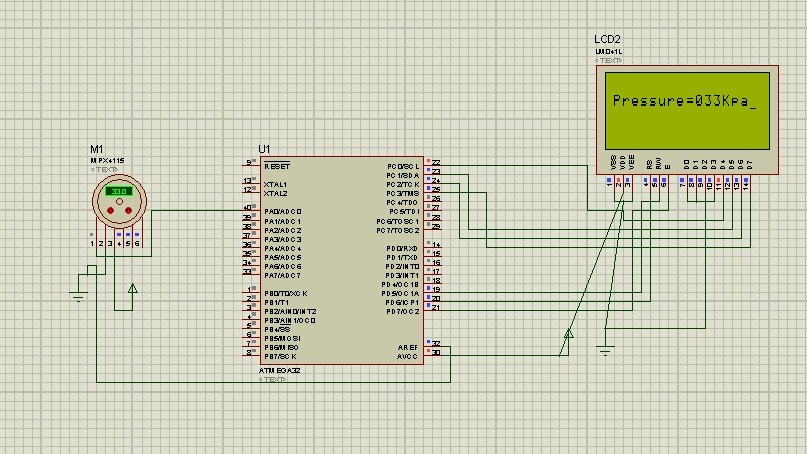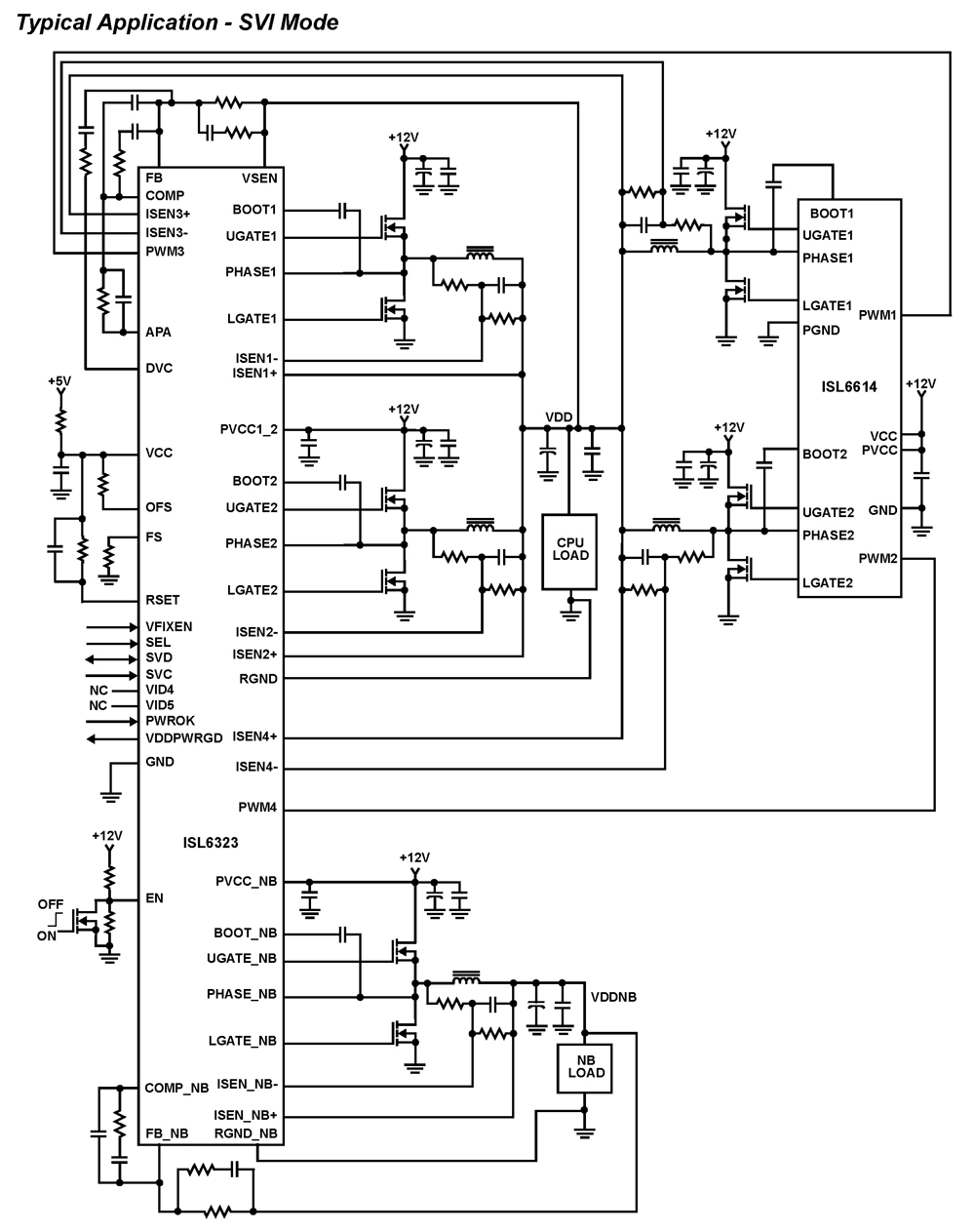
Arduino Differential Controller

Faulty readings from the DS18B20 temperature sensors used in tank thermometers were likely caused by the waterproofing method involving heat shrink and silicone. This situation provided an opportunity to enhance the code for better tolerance against erroneous readings. The tank thermometers have since been replaced with waterproofed DS18B20 probes, which are inexpensive and available on eBay. However, it is not recommended to use this method for long-term submersion, although it may be suitable for water-resistant applications. The thermometers were soldered directly to the signal wire and sealed using heat shrink. The cable was prepared with approximately 2 inches of exposed wire, with the ends stripped to about 3/8 inch. Small heat shrink was placed over the wires before soldering, ensuring it was not too long to avoid melting from the soldering iron's heat. Forceps were utilized to hold the wires during soldering, acting as a heat sink to prevent insulation melting. Heat was applied with the soldering iron until the solder could be applied directly to the wires, ensuring the wires melted the solder, not the iron. After soldering, the wires were carefully straightened, and heat shrink was applied over the exposed areas. A blow torch was used to shrink the heat shrink, with caution taken to avoid burning. If a heat gun is unavailable, a hot hair dryer may serve as an alternative, though it may not be effective. A larger piece of heat shrink was used over the thermometer, ensuring a tight seal upon shrinking, which was further secured by heating and squeezing the material together.
The DS18B20 temperature sensor is a digital thermometer that utilizes a one-wire interface, allowing multiple sensors to be connected to a single data line. This feature is particularly useful in applications where multiple temperature readings are necessary, such as in aquaculture or HVAC systems. The waterproofing method described involves careful preparation of the sensor and its connections to ensure reliability in wet environments.
To implement this waterproofing method, it is essential to use high-quality solder and ensure that the connections are secure and well-formed to prevent any potential failure points. The choice of heat shrink tubing is critical; it should have an appropriate shrink ratio to create a snug fit around the sensor and wires. Additionally, the use of silicone sealant can further enhance the waterproofing by filling any gaps and providing an extra layer of protection against moisture ingress.
When soldering, it is recommended to use a soldering iron with a fine tip to achieve precision in applying solder to the small wires of the DS18B20. The application of heat should be controlled to avoid damaging the sensor or the insulation of the wires. After soldering, a cooling period is necessary to ensure that the solder joint is solid before manipulating the wires further.
For the heat shrink application, it is advisable to use a heat source that provides even heating. A heat gun is ideal for this purpose, as it allows for controlled application of heat without the risk of burning the material. When using a lighter or torch, care must be taken to maintain a safe distance from the heat shrink to prevent overheating and damaging the sensor or insulation.
Overall, this waterproofing technique, while effective for short-term applications, may not be suitable for long-term submersion. For extended use in aquatic environments, alternative methods such as encapsulation in resin or the use of commercially available waterproof temperature sensors should be considered to ensure long-term reliability and performance.I experienced faulty DS18B20 reads on my tank thermometers, probably due to my heatshrink/silicone waterproofing method. It gave me a chance to improve my code to make the controller more tolerant of bad reads, but my tank thermometers have now been replaced with waterproofed DS18B20 probes, which are very cheap on ebay.
it is NOT reccommended that you use the following method if you intend to fully submerge the thermometer for long term, though it may work ok for a water resistant applications. I chose to solder the thermometers directly to the signal wire, and then seal it all up with heat-shrink.
Prepare you cable with about 2" of exposed wire. Strip the ends about 3/8", and slip small heat-shrink over wires before soldering. Make sure the heat shrink is not too long so you don`t shrink it with the soldering iron heat. I used forceps to clip the wires to be soldered together. This also acts as a heat sink so the wire insulation does not melt. Apply heat with the iron long enough so that solder can be applied directly to the wires. The wires should melt the solder, not the iron. Give the solder several seconds to cool before removing clip. After all pins are soldered, very carefully straighten them and slip the heat-shrink fully over the exposed wire. I used a blow torch to shrink the heat-shrink. If you don`t have a heat-gun and choose to do it the wrong way like me, do not put it directly in the flame.
You want to warm it up, not burn it up. Be carefully, and if it starts smoking, your applying too much heat. Move the wire around briskly and turn it to shrink all sides evenly. A very hot hair dryer might work as a make-shift heat gun. My wifes didn`t seem to be hot enough though. Slip a piece of larger heat shrink over the thermometer, all the way to the cable. Pick a diameter that is just big enough to slip over the thermometer. This should make it a nice, tight seal once it shrinks. Shrink it. I made this piece long enough that there was extra material beyond the thermometer. I then heated it with a lighter, and squeezed it together to further seal it off. 🔗 External reference
The DS18B20 temperature sensor is a digital thermometer that utilizes a one-wire interface, allowing multiple sensors to be connected to a single data line. This feature is particularly useful in applications where multiple temperature readings are necessary, such as in aquaculture or HVAC systems. The waterproofing method described involves careful preparation of the sensor and its connections to ensure reliability in wet environments.
To implement this waterproofing method, it is essential to use high-quality solder and ensure that the connections are secure and well-formed to prevent any potential failure points. The choice of heat shrink tubing is critical; it should have an appropriate shrink ratio to create a snug fit around the sensor and wires. Additionally, the use of silicone sealant can further enhance the waterproofing by filling any gaps and providing an extra layer of protection against moisture ingress.
When soldering, it is recommended to use a soldering iron with a fine tip to achieve precision in applying solder to the small wires of the DS18B20. The application of heat should be controlled to avoid damaging the sensor or the insulation of the wires. After soldering, a cooling period is necessary to ensure that the solder joint is solid before manipulating the wires further.
For the heat shrink application, it is advisable to use a heat source that provides even heating. A heat gun is ideal for this purpose, as it allows for controlled application of heat without the risk of burning the material. When using a lighter or torch, care must be taken to maintain a safe distance from the heat shrink to prevent overheating and damaging the sensor or insulation.
Overall, this waterproofing technique, while effective for short-term applications, may not be suitable for long-term submersion. For extended use in aquatic environments, alternative methods such as encapsulation in resin or the use of commercially available waterproof temperature sensors should be considered to ensure long-term reliability and performance.I experienced faulty DS18B20 reads on my tank thermometers, probably due to my heatshrink/silicone waterproofing method. It gave me a chance to improve my code to make the controller more tolerant of bad reads, but my tank thermometers have now been replaced with waterproofed DS18B20 probes, which are very cheap on ebay.
it is NOT reccommended that you use the following method if you intend to fully submerge the thermometer for long term, though it may work ok for a water resistant applications. I chose to solder the thermometers directly to the signal wire, and then seal it all up with heat-shrink.
Prepare you cable with about 2" of exposed wire. Strip the ends about 3/8", and slip small heat-shrink over wires before soldering. Make sure the heat shrink is not too long so you don`t shrink it with the soldering iron heat. I used forceps to clip the wires to be soldered together. This also acts as a heat sink so the wire insulation does not melt. Apply heat with the iron long enough so that solder can be applied directly to the wires. The wires should melt the solder, not the iron. Give the solder several seconds to cool before removing clip. After all pins are soldered, very carefully straighten them and slip the heat-shrink fully over the exposed wire. I used a blow torch to shrink the heat-shrink. If you don`t have a heat-gun and choose to do it the wrong way like me, do not put it directly in the flame.
You want to warm it up, not burn it up. Be carefully, and if it starts smoking, your applying too much heat. Move the wire around briskly and turn it to shrink all sides evenly. A very hot hair dryer might work as a make-shift heat gun. My wifes didn`t seem to be hot enough though. Slip a piece of larger heat shrink over the thermometer, all the way to the cable. Pick a diameter that is just big enough to slip over the thermometer. This should make it a nice, tight seal once it shrinks. Shrink it. I made this piece long enough that there was extra material beyond the thermometer. I then heated it with a lighter, and squeezed it together to further seal it off. 🔗 External reference
